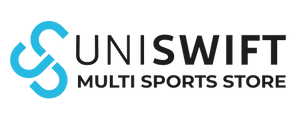The sports industry is a vast sector of multiple businesses, the whole industry is dependent upon various business models that all play a vital role in the stability and mobility of the industry. When it comes to how the industry is working and staying alive for all these years, the businesses involved are manufacturing, trading, wholesaling, retailing, and the entertainment industry. The entertainment industry is responsible for advertising sports and starting new trends in sports, trends that consumers tend to follow. Retailers try their best to meet their demands by stocking up from wholesalers and traders, who are directly dependent on the manufacturers for a stable and quality supply. It's an ecosystem that is interdependent and works like a well-oiled machine.
New trends in the apparel industry also affect the hype and demand for sports products, like the athleisure trend. A trend that relies on comfort and style, you see it every day people pairing sports sneakers with suits or wearing sports hoodies on top of dress pants. It has allowed consumers to feel comfortable while being dressed for their regular office days or even formal occasions. It has been normalized and accepted throughout society to stay comfortable and well-dressed at the same time. Also portraying the idea of a healthy and active lifestyle not bound by the standard traditions of society.
All that said, like any other industry the sports sector also has its shortcomings and lags that affect the market. The biggest lag is the communication gaps between the retailers and manufacturers or a better way to put it is the gaps between the customer and manufacturer. Too often the customer demands a certain product or quality that is unknown to the manufacturer or is not communicated to them at the right pace, which results in the wrong allocation of resources and discontentment of the customer.
For example, customers demand a futsal ball for a specific field like artificial grass but manufacturers keep developing the standard futsal ball, resulting in low performance in the game. All because the information is not conveyed at the right time by retailers or brands that interact with the final consumer. Certain trends reach the manufacturer a bit too late, resulting in scarcity of the desired product in the market. Another problem is the quality assurance of products, every business independently assures their products but not according to the market or a specific standard.
That's where we step in, trading sports equipment from as long as we came into existence. Our knowledge of the sport and the industry has enabled us to meet the customers' needs and act as a bridge between all the wheels working to keep the industry going and growing. Our direct knowledge of manufacturing and the market has equipped us to solve the million-dollar problem of the sports industry.
We at UniSwift are a trading company for Sports & Lifestyle Goods. We position ourselves for consumers and corporations as a value-adding partner to make well-informed buying decisions. Our standards are that of international brands, not compromising on quality is the one thing that keeps us going.
Our communications channels and quality assurance practices are strong, making us confident in our dealings and serving our customers. We have an established supply chain to 200+ retail partners and many customers for customized products in Soccer balls, Volleyball, Cricket, Sports Bags, and apparel. Being involved and experienced in the consumer market has enabled us to foresee the upcoming trends and demands of the customer, and our vast experience in production gives us the edge.

